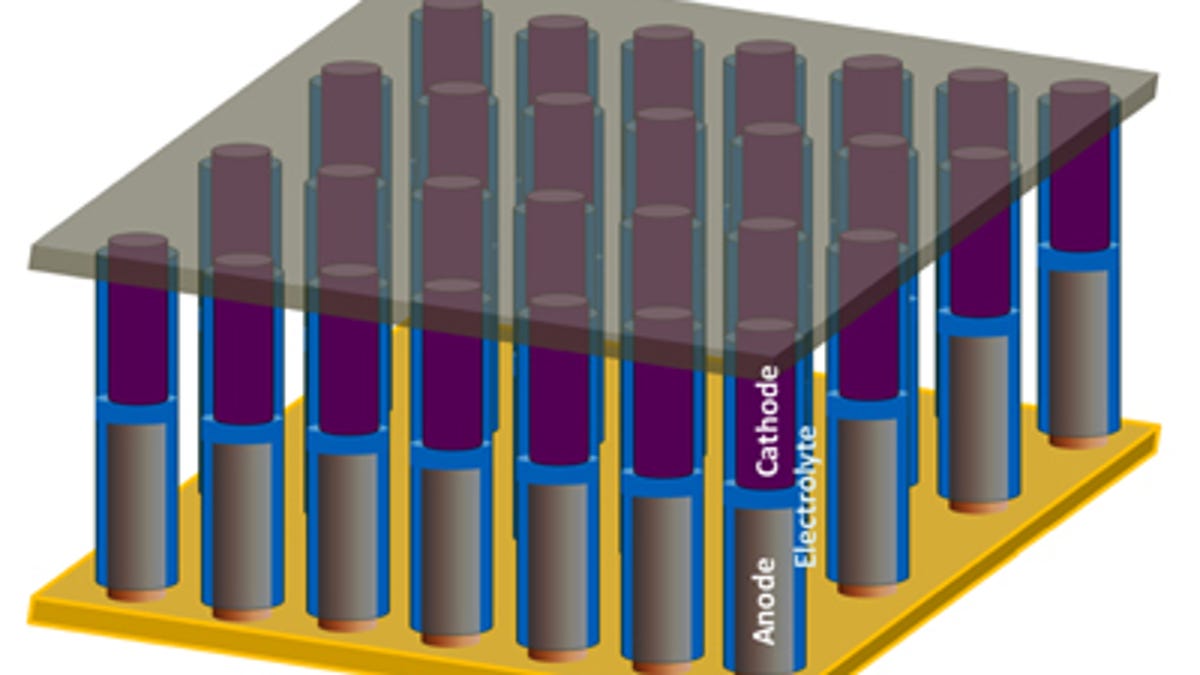World's smallest battery will put power everywhere
University researchers make a battery out of a nanowire, setting the record for the smallest powerpack. Someday the batteries could be inside your body.

Researchers have built a battery that's six times thinner than a bacterium. The microscopic power pack could be used to run all sorts of minuscule electronic devices, including sensors that spy on single cells.
Does this mean we'll start seeing commercials for the Energizer bacterium? At 150 nanometers wide, the nano battery is hundreds of times thinner than a human hair and more than 60,000 times smaller than a AAA battery. How many "A"s is that?
The little battery, developed at Rice University, is actually a cross between a battery and a supercapacitor. Supercapacitors can deliver more power at once than batteries--a bigger jolt. The diminutive battery is made by the thousands in dense arrays. Each battery is a nanowire, with one half of the wire working as a negative electrode and the other half as a positive electrode.
Arrays of these nano batteries could be used to power implantable medical devices, chemical and biological sensors, and microscopic wireless networks. They could also enable tiny embedded computers in all manner of devices, which could cause countless everyday objects to have "smart" added to their names. Smart toothbrush, anyone?
In addition, they could be combined with tiny energy-harvesting devices.
The skinnier-than-a-bacterium battery is currently a lab prototype, which means all the details aren't yet worked out. There's still work to do to go from proof of concept to something you can put in a commercial product. For one thing, the battery's performance tails off after recharging only 20 times. That doesn't cut it, especially if you plan to put these in implantable devices. Replacing those little camera batteries is hard enough.

